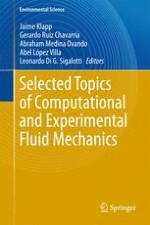2015 | OriginalPaper | Buchkapitel
A Newtonian Approach to the Cosmological Dark Fluids
verfasst von : A. Aviles, J. L. Cervantes-Cota, J. Klapp, O. Luongo, H. Quevedo
Erschienen in: Selected Topics of Computational and Experimental Fluid Mechanics
Aktivieren Sie unsere intelligente Suche, um passende Fachinhalte oder Patente zu finden.
Wählen Sie Textabschnitte aus um mit Künstlicher Intelligenz passenden Patente zu finden. powered by
Markieren Sie Textabschnitte, um KI-gestützt weitere passende Inhalte zu finden. powered by
